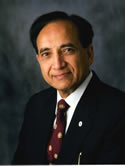Correlation of osteoradionecrosis and dental events with dosimetric parameters in intensity-modulated radiation therapy for head-and-neck cancer Journal Article
| Authors: | Gomez, D. R.; Estilo, C. L.; Wolden, S. L.; Zelefsky, M. J.; Kraus, D. H.; Wong, R. J.; Shaha, A. R.; Shah, J. P.; Mechalakos, J. G.; Lee, N. Y. |
| Article Title: | Correlation of osteoradionecrosis and dental events with dosimetric parameters in intensity-modulated radiation therapy for head-and-neck cancer |
| Abstract: | Purpose: Osteoradionecrosis (ORN) is a known complication of radiation therapy to the head and neck. However, the incidence of this complication with intensity-modulated radiation therapy (IMRT) and dental sequelae with this technique have not been fully elucidated. Methods and Materials: From December 2000 to July 2007, 168 patients from our institution have been previously reported for IMRT of the oral cavity, nasopharynx, larynx/hypopharynx, sinus, and oropharynx. All patients underwent pretreatment dental evaluation, including panoramic radiographs, an aggressive fluoride regimen, and a mouthguard when indicated. The median maximum mandibular dose was 6,798 cGy, and the median mean mandibular dose was 3,845 cGy. Patient visits were retrospectively reviewed for the incidence of ORN, and dental records were reviewed for the development of dental events. Univariate analysis was then used to assess the effect of mandibular and parotid gland dosimetric parameters on dental endpoints. Results: With a median clinic follow-up of 37.4 months (range, 0.8-89.6 months), 2 patients, both with oral cavity primaries, experienced ORN. Neither patient had preradiation dental extractions. The maximum mandibular dose and mean mandibular dose of the 2 patients were 7,183 and 6,828 cGy and 5812 and 5335 cGy, respectively. In all, 17% of the patients (n = 29) experienced a dental event. A mean parotid dose of >26 Gy was predictive of a subsequent dental caries, whereas a maximum mandibular dose >70 Gy and a mean mandibular dose >40 Gy were correlated with dental extractions after IMRT. Conclusions: ORN is rare after head-and-neck IMRT, but is more common with oral cavity primaries. Our results suggest different mechanisms for radiation-induced caries versus extractions. © 2011 Elsevier Inc. |
| Keywords: | major clinical study; intensity modulated radiation therapy; follow up; radiotherapy; retrospective study; prediction; head and neck cancer; imrt; physical therapy; dosimetry; medical record; radiography; head and neck; parotid gland; osteoradionecrosis; bone necrosis; dental care; mandible; mouth cavity; hypopharynx; nasopharynx; oropharynx; dosimeters; dental caries; dental extractions; fluoride; mouth protector; panoramic radiography; tooth extraction |
| Journal Title: | International Journal of Radiation Oncology, Biology, Physics |
| Volume: | 81 |
| Issue: | 4 |
| ISSN: | 0360-3016 |
| Publisher: | Elsevier Inc. |
| Date Published: | 2011-11-15 |
| Start Page: | e207 |
| End Page: | e213 |
| Language: | English |
| DOI: | 10.1016/j.ijrobp.2011.02.003 |
| PROVIDER: | scopus |
| PUBMED: | 21570202 |
| DOI/URL: | |
| Notes: | --- - "Export Date: 9 December 2011" - "CODEN: IOBPD" - "Source: Scopus" |
Altmetric
Citation Impact
BMJ Impact Analytics
MSK Authors
Related MSK Work












